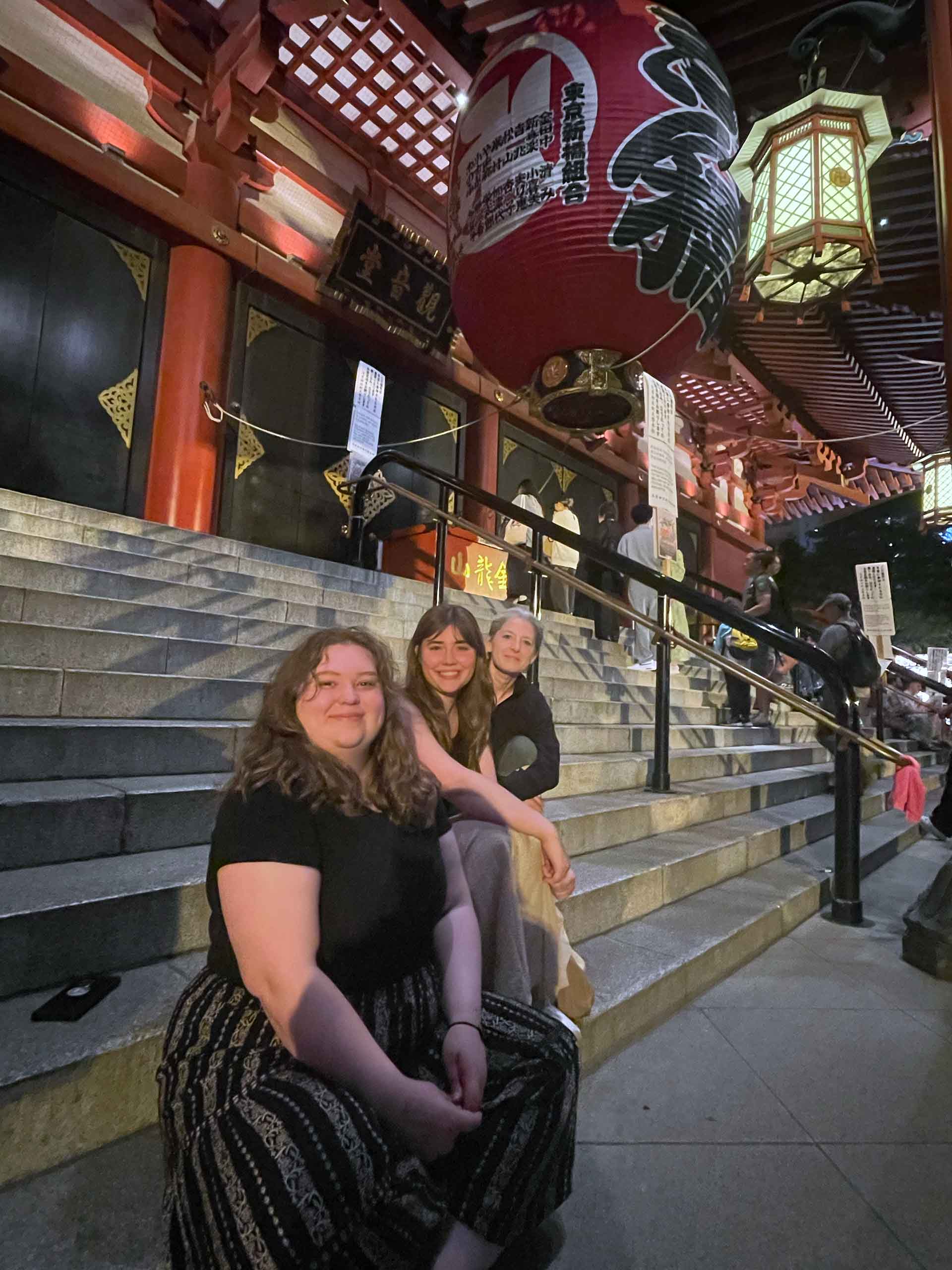In May 2024, SMTD theatre design & production students traveled to Tokyo and Kyoto in Japan with Professor Sarah M. Oliver, whose teaching includes the course “Fashion and Costume: Global Adornment & Attire.” Through visits to a fashion college, museums, and a weaving factory, as well as attending a parade highlighting historical clothing, the students gained invaluable knowledge and experience. “It was so fulfilling watching students fit together all the pieces of what was learned in the classroom on our study abroad trip,” Oliver said. “Being in Japan gave the students the ability to investigate culture and knowledge about fashion and textiles in person while making discoveries, both big and small, every single day.”
Students taking “Global Adornment & Attire” in the winter 2025 term will have the opportunity to register for an additional study abroad credit in the spring/summer term to go on a trip abroad related to the course.
I never dreamed I would go to Japan during my time at the University of Michigan. Being a costume design student, I was thrilled at the opportunity to research and learn about historical dress, textile production, and current fashion in a place so rich in culture. And I had never been out of the country, so I was filled with nervousness and excitement for my first trip abroad.
On our first day in Tokyo, we toured Bunka Fashion College. Even though we had just traveled halfway around the world, my excitement overrode my jetlag. (Well, that and all the amazing matcha treats I’d gotten from the convenience store Lawson.) We met up with our translator, Elena Iizuka (a connection we made through U-M’s very own Mo Zhou!), whose sister attends Bunka. One of the first highlights of the tour was the incredible view of Tokyo we enjoyed from the school’s top-floor workroom. This was my first full view of Japan’s capital, and it was astonishing, filled with pastel buildings and skyscrapers in the distance. We visited many of the workrooms, including an incredible studio where students were making shirts with the best technique and precision I’ve ever seen. While exploring the libraries, workrooms, and displays throughout Bunka, examining the students’ outfits was my favorite activity. Every student had employed incredible style to create stunning, unique pieces. I left feeling so inspired, and the clothes I thrifted the next day in Harajuku reflected my admiration of these students.
Five days and one bullet train later, we were in Kyoto. I have a deep interest in textile arts, but I never fully understood the weaving process, and the places we visited in Kyoto opened my eyes to the talent that goes into weaving and helped me to fully wrap my mind around the process.
Our first stop was the Nishijin Textile Center, which had many exhibits explaining the weaving process, including one where I even got to spin silk from real silkworms! I started to get a handle on the weaving process as I watched one of the demonstrators create across their loom. Seeing the process in person helped me understand the intricacies of how the weaver works in tandem with the machine.
Next, we headed to the Orinasukaen Handmade Fabrics Museum and Watabun Nishijin ori obi factory. The obi factory space felt less like a factory and more like a beautiful studio, with its wide windows and tatami mat floors. Our tour included the studio where the artisans, who had been weaving for decades, were at their looms. Getting to see them work up close was nothing short of magical. The woman we watched would click the pedal and slide her metallic-threaded shuttle through with such intricacy and precision. Watching the pattern of multicolored birds she was creating emerge as she continued this process was incredible. Seeing the talent and time it takes to weave an obi gave me so much appreciation for this art and immensely increased my interest in the artform.
On May 15th, we attended the annual Aoi Matsuri parade, which begins at the Imperial Palace in Kyoto and includes over 500 people dressed in the clothing of the Heian Period. Seeing all types of historical dress and Noh costumes in museums is great, but watching parade participants (including some on horseback!) wearing such garments while marching, turning, and gesturing was invaluable. As we took our seats close to the palace, we received a booklet that included images of all the attire and the occupation each garment represents. As the parade began, I was most surprised by the intensity of the color in the attire. Based on what I had seen previously in old paintings, I didn’t fully understand how bright the dyes were. My favorite piece was the uniform of the Uneme (a female court official), which had a gorgeous wave pattern across the kimono textile; it was based on designs used by attendants to emperors from about the 16th century to the 19th. Watching this parade was critical to my understanding of how this historical dress moves when worn and expanded my knowledge so much!
This trip was filled with such great opportunities to experience Japanese culture, and my favorite parts were drinking matcha and immersing myself in the fashion. I am already starting to see the influence that looking at Japanese historical dress has on my perception of fashion and the ways it has influenced my designs. I am incredibly grateful to everyone who made this possible, and I am thrilled for the future students who will be taking this trip through the global adornment & attire class!





